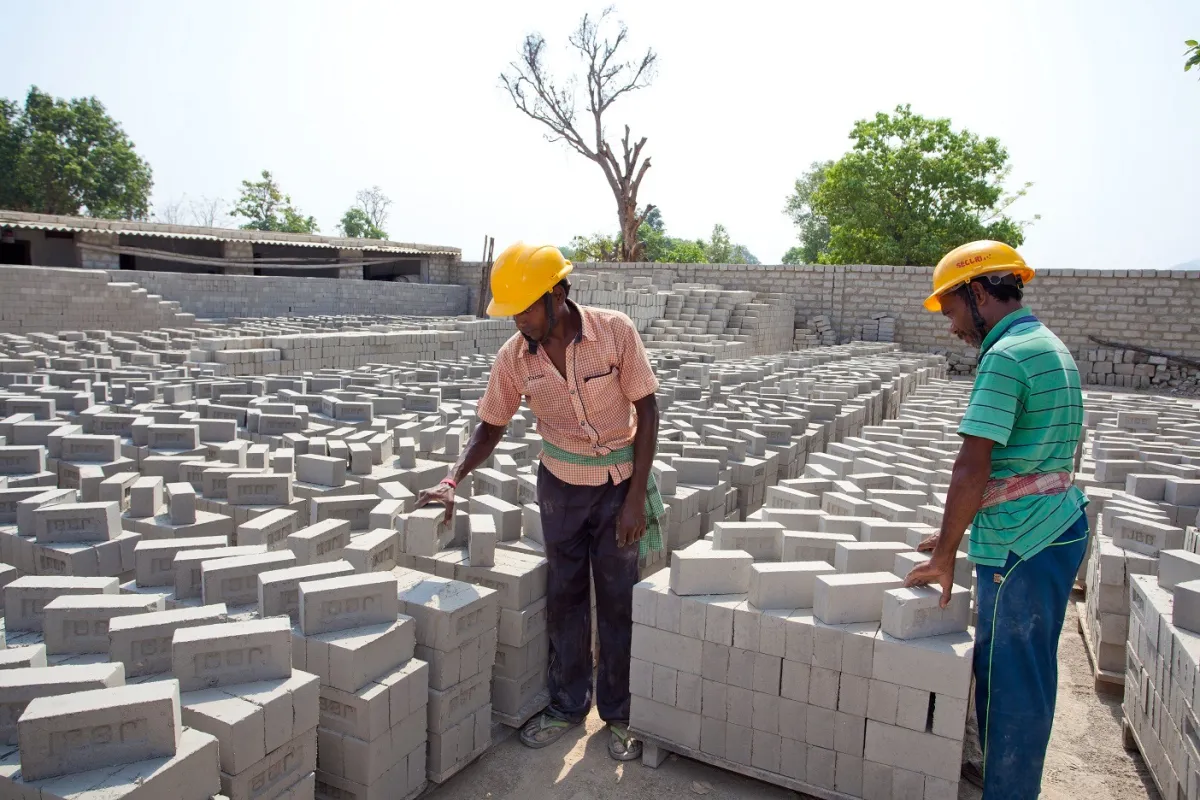
Fly Ash Bricks Manufacturing Cost Analysis 2025: Capex, Opex, And ROI Evaluation For Plant Setup
Setting up a fly ash brick manufacturing plant requires site selection, machinery installation, and access to raw materials such as fly ash, sand, and cement. With moderate investment, semi-automatic or fully automatic machines can be deployed for efficient production. Proper planning, quality control, and compliance with environmental regulations ensure cost-effective operations and long-term profitability.
IMARC Group's report, titled “ Fly Ash Bricks Manufacturing Plant Project Report 2025: Industry Trends, Plant Setup, Machinery, Raw Materials, Investment Opportunities, Cost and Revenue,” provides a complete roadmap for setting up a fly ash bricks manufacturing plant. It covers a comprehensive market overview to micro-level information such as unit operations involved, raw material requirements, utility requirements, infrastructure requirements, machinery and technology requirements, manpower requirements, packaging requirements, transportation requirements, etc.
Request for a Sample Report : https://www.imarcgroup.com/fly-ash-bricks-manufacturing-plant-project-report/requestsample
Fly Ash Bricks Industry outlook 2025:
The fly ash bricks industry outlook for 2025 indicates strong growth, driven by rising demand for sustainable and cost-effective construction materials. Increasing government initiatives to promote eco-friendly building practices, coupled with stricter restrictions on traditional clay brick kilns, are boosting adoption. Urbanization, infrastructure expansion, and affordable housing projects are further fueling market demand. Technological advancements in automated brick manufacturing and improved supply chain networks are enhancing production efficiency and quality. Additionally, the industry benefits from the abundant availability of fly ash as a byproduct of thermal power plants, positioning fly ash bricks as a sustainable solution in modern construction.
Key Insights for Fly Ash Bricks Manufacturing Plant Setup:
Detailed Process Flow:
-
Product Overview
Unit Operations Involved
Mass Balance and Raw Material Requirements
Quality Assurance Criteria
Technical Tests
Project Details, Requirements and Costs Involved:
-
Land, Location and Site Development
Plant Layout
Machinery Requirements and Costs
Raw Material Requirements and Costs
Packaging Requirements and Costs
Transportation Requirements and Costs
Utility Requirements and Costs
Human Resource Requirements and Costs
Capital Expenditure (CapEx) and Operational Expenditure (OpEx) Analysis:

Project Economics:
-
Capital Investments
Operating Costs
Expenditure Projections
Revenue Projections
Taxation and Depreciation
Profit Projections
Financial Analysis
Profitability Analysis:
-
Total Income
Total Expenditure
Gross Profit
Gross Margin
Net Profit
Net Margin
Key Cost Components of Setting Up a Fly Ash Bricks Plant :
-
Land and Site Development – Cost of acquiring land, leveling, and preparing the site for operations.
Machinery and Equipment – Investment in brick-making machines (manual, semi-automatic, or fully automatic), mixers, conveyors, and curing chambers.
Raw Materials – Procurement of fly ash, sand, cement, lime, and gypsum for consistent production.
Utilities and Infrastructure – Expenses for power supply, water facilities, and storage arrangements.
Labor and Training – Wages for skilled and unskilled workers along with training costs.
Licensing and Compliance – Fees for government approvals, environmental clearances, and certifications.
Working Capital – Operational funds for raw material inventory, transportation, and daily expenses.
Economic Trends Influencing Fly Ash Bricks Plant Setup Costs 2025 :
-
Raw Material Pricing Volatility – Fluctuations in cement, sand, and gypsum prices directly impact production costs.
Energy and Fuel Costs – Rising electricity and fuel prices increase operational and machinery running expenses.
Government Incentives and Subsidies – Policies promoting eco-friendly construction materials reduce initial investment through tax benefits and subsidies.
Infrastructure Growth – Expanding real estate and infrastructure projects boost demand, influencing economies of scale in production.
Technological Advancements – Adoption of automated machinery lowers long-term labor costs but increases upfront investment.
Environmental Regulations – Stricter policies on waste utilization and clay brick manufacturing drive higher demand but add compliance costs.
Speak to an Analyst for Customized Report: https://www.imarcgroup.com/request?type=report&id=14153&flag=E
Challenges and Considerations for Investors in Fly Ash Bricks Plant Projects:
-
Raw Material Dependency – Reliance on fly ash supply from thermal power plants can create availability and logistics challenges.
High Initial Investment – Significant capital is required for land, machinery, and infrastructure before achieving profitability.
Market Competition – Increasing number of small and medium players intensifies price competition and reduces margins.
Quality Control – Maintaining uniform brick quality requires skilled labor, proper curing methods, and strict process monitoring.
Regulatory Compliance – Adhering to environmental standards, waste utilization norms, and licensing requirements can be time-consuming.
Demand Fluctuations – Market demand is closely linked to real estate and infrastructure growth cycles, creating revenue uncertainty.
Conclusion:
The fly ash bricks industry presents a promising investment opportunity, supported by rising demand for sustainable construction materials, government incentives, and the growing focus on eco-friendly infrastructure. While the sector offers long-term profitability and environmental benefits, investors must carefully evaluate raw material availability, technological choices, and regulatory compliance before setting up operations. Strategic planning, adoption of efficient production systems, and strong market positioning are essential to overcoming challenges such as competition, quality control, and demand fluctuations. With the right approach, establishing a fly ash brick manufacturing plant in 2025 can be both economically viable and environmentally sustainable.
About Us:
IMARC Group is a global management consulting firm that helps the world's most ambitious changemakers to create a lasting impact. The company excel in understanding its client's business priorities and delivering tailored solutions that drive meaningful outcomes. We provide a comprehensive suite of market entry and expansion services. Our offerings include thorough market assessment, feasibility studies, company incorporation assistance, factory setup support, regulatory approvals and licensing navigation, branding, marketing and sales strategies, competitive landscape, and benchmarking analyses, pricing and cost research, and procurement research.
Contact Us:
IMARC Group
134 N 4th St. Brooklyn, NY 11249, USA
Email: sales[@]imarcgroup.com
Tel No:(D) +91 120 433 0800
United States: (+1-201971-6302)
Legal Disclaimer:
MENAFN provides the
information “as is” without warranty of any kind. We do not accept
any responsibility or liability for the accuracy, content, images,
videos, licenses, completeness, legality, or reliability of the information
contained in this article. If you have any complaints or copyright
issues related to this article, kindly contact the provider above.
















Comments
No comment